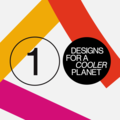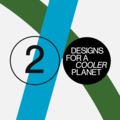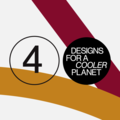Hack our habitat

When
Where
Event language(s)
Aggressive urbanisation is straining our ecosystem. Rising construction volume causes massive demand for energy-intensive construction materials, and construction already accounts for 39 per cent of the global CO2 emissions.
Growing urban areas make it difficult for plants and animals to thrive. They also cause floods and flush chemicals into the oceans.
Around 90 per cent of our time is spent indoors, so the built environment has a huge impact on our wellbeing.
We need to hack our habitat and design better-built environments for us and the whole ecosystem.
---
Note: According to the current coronavirus guidelines, only the Aalto students and personnel can visit the Otaniemi campus exhibitions without pre-booking. From September 7 onwards, we will organise a few small group visits to the exhibitions at Väre and Vuorimiehentie 2. Visits must be booked in advance. Registration links will be updated here in September. For the time being, we’ll organise all events (except Infrastructure walk) as virtual events.
Our team in this game
Articulated landscapes: Sustainable future cities between architecture and landscape
By viewing the city as a systemic network of relationships, we can develop new approaches to our future challenges related to urbanisation.

Carbon Lane – Urban test site for sequestering carbon with biochar
Biochar can significantly increase the long-term capacity of cities to sequester carbon.

Makers of Landscapes - Viewpoints on landscape architecture
Landscape architecture is a multidisciplinary field, combining architecture, natural sciences and technology, and it has many solutions to climate change.

Exploring nature-based solutions to control stormwaters in urbanised Otaniemi
A mathematical model explores the benefits of using nature-based solutions in stormwater design and management on the Aalto University Otaniemi campus.

Infrastructure walk in Otaniemi
The infrastructure walk is a convivial and educational practice, combining technical expertise with local knowledge.

Interplay of cultures – Education in Global Sustainability
A selection of student projects celebrate the 25th anniversary of education in global sustainability and humanitarian development at Aalto.

New Life of Gardenia - adaptive reuse concepts for the former nature center in Viikki
Architecture students developed ideas for the future use of Gardenia building in Viikki, Helsinki.

Layering Cellulose: Recyclable bio-material for structural purposes in furniture, interiors and architecture
Construction industry consumes a lot of materials, which also often are not biodegradable, bio-based or recyclable.

The Alder Project - How to understand forests
The project documents a zero-waste approach: how an alder tree can be cut down, researched and used for furniture while leftovers are processed as a new fibre-based biomaterial.

Waves Rising – Projections of rising sea levels
A sculptural installation conceptually materialises projections of rising sea levels as a consequence of climate change.

The Baltic Ripple Effect
The Baltic Sea is one of the most vulnerable biospheres; a fragile ecosystem that is suffering from human impact.

Soil Matters exhibition at Designmuseum
Explorations on the materiality of soil and how it is interwoven with human activity.

The Project Underground: A Whale
This video installation project raises awareness of whales and their hunt.

The targets to reach
After rapid global urbanization, more people live in urban areas than in rural areas. Architecture and landscape architecture consider various social, political and ecological targets. Public outdoor spaces embody freedom and justice: squares, streets and parks are places to spend time and gather.
Sustainably managed forests combat desertification, halt and reverse land degradation, and slow down biodiversity loss. We need to find efficient ways to sequester carbon in urban environments. As the climate gets warmer and cities are becoming even denser, invigorating vegetation and vibrant green networks are increasingly more important.
Extreme weather events cause stormwater overflows due to the sheer quantity of constructed surfaces and outdated stormwater systems. Nature-based solutions, such as green roofs, pervious pavements and vegetated retention or swale provide hydrological, biological and social benefits.
Human impacts on our seas are omnipresent: from noise pollution to microplastics, from eutrophication to oil spills. No human can ever know the ocean like the species that live underwater; but at the same time, our way of life constantly impacts the ocean.
As cities develop and societies change, there are buildings that find themselves in the wrong locations with the wrong functions. Instead of causing a huge carbon spike by demolition and new construction, they should be given a new life.
The construction industry is very materials intensive, and the majority of materials used are not renewable, recyclable or biodegradable. Building materials and structures are composites that are frequently difficult to separate and return to materials life-cycle loops.

To make necessary changes, we need intelligent and well-designed solutions.
Designs for a Cooler Planet
The event is a part of Helsinki Design Week’s official festival programme, the largest design festival in the Nordics takes place 3–13.9.2020. Designs for a Cooler Planet is also one of the EU's Green Week 2020 partner events.
Farewell to fossil fuels
More than half of our energy still comes from fossil fuels. No single technology can replace our reliance on them.

Close the loops
Making things and manufacturing processes produce pollution and environmental degradation, draining natural resources.

Hack our habitat
Aggressive urbanisation is straining our ecosystem. Rising construction volume causes massive demand for energy-intensive construction materials, and construction already accounts for 39 per cent of the global CO2 emissions.

Consume consciously
Household consumption accounts for more than 60 per cent of global greenhouse gas emissions and 50–80 per cent of total land, material and water use.

Please notice that exhibitions are in four different locations at the Otaniemi campus area which all have different opening hours. Please check specific details from the exhibition pages. We are monitoring the COVID-19 situation closely, and the event will follow all of the rules and regulations set by the Finnish authorities. The safety of the employees, students and visitors is always prioritised.
Graphic design: Olga Elliot & Milja Komulainen
- Published:
- Updated: